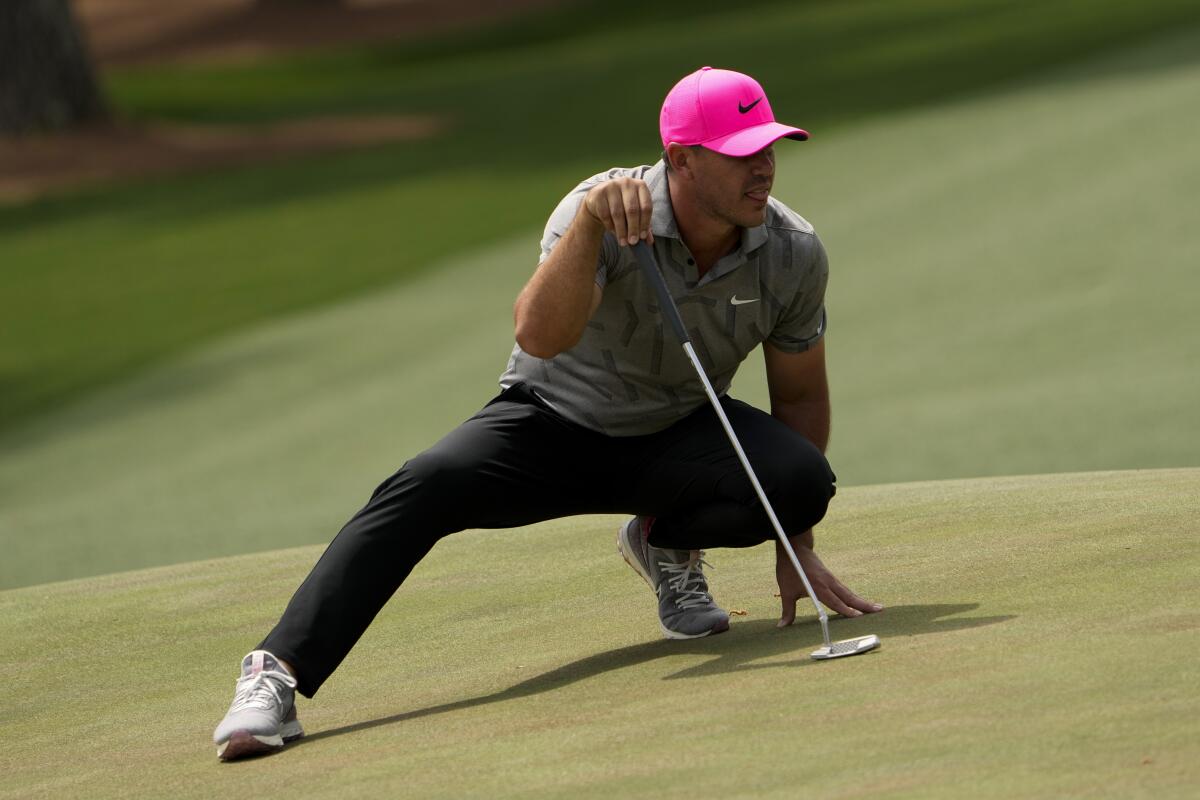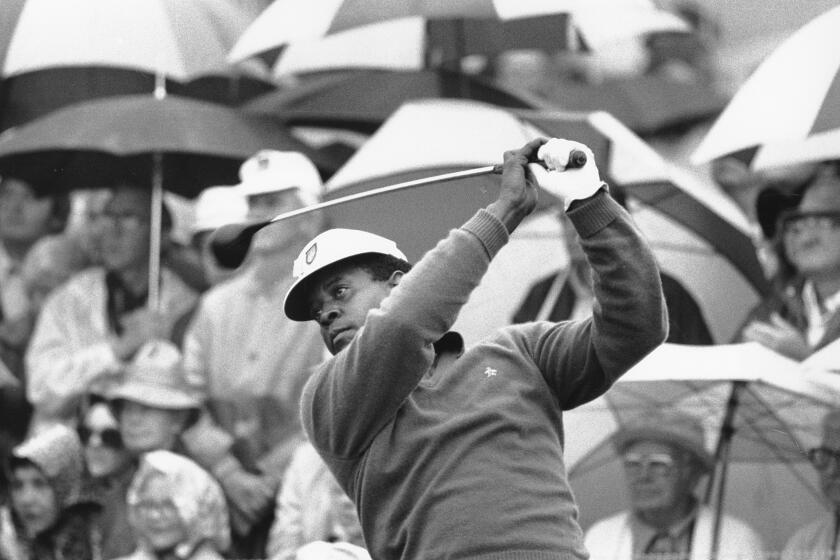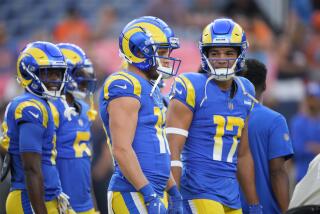Brooks Koepka misses the cut at Masters after recent knee surgery

)
- Share via
AUGUSTA, Ga. — The surgeon who reconstructed the right knee of Brooks Koepka three weeks ago said it’s “miraculous” that the former World No. 1-ranked golfer was able to compete in the Masters.
Earlier this year, Koepka suffered a dislocated kneecap in an unspecified “freak accident” yet was back on the course, shooting a two-over-par 74 in the first round Thursday. Although he didn’t limp, he seemed to slightly favor the knee, and kept that leg straight and to the side when he got down to read putts. The four-time major winner shot a 75 Friday and missed the cut by two shots.
“I’ve never seen anyone recover this fast,” said Dr. Neal ElAttrache, team orthopedic surgeon for the Rams and Dodgers who performed the surgery and is staying in Augusta with Koepka this week to monitor the knee. “He’s as tough as they come, and mentally tough, trusting the process and everything and working his … off. As much as an NFL player. Totally engaged in the process.”
In an exclusive with the Los Angeles Times, ElAttrache detailed how he repaired the ligament to restore stability to Koepka’s fractured kneecap, adding internal bracing and protection to allow accelerated rehabilitation and the chance to return to competition months ahead of a typical schedule.
“Manny Machado had that, dislocated kneecap on national TV, and I had to fix it,” he said of the San Diego Padres and former Dodgers third baseman, who suffered that injury in 2013 while playing for Baltimore.
“Manny I had six months to get better. Brooks is telling me that he’s determined to play in the Masters because he’s missed a few tournaments lately for injuries, and did I think I could get him to the Masters?”
Tommy Jackson always wanted to attend the Masters. He finally made it to Augusta National — the spring after he died.
ElAttrache, whose list of clients is a who’s who of the biggest names in sports, credits physical therapists Heather Milligan and Marc Wahl with playing an invaluable role in Koepka’s rehabilitation.
“Between Heather and Marc, Brooks worked six hours a day,” he said. “They were huge in this.”
ElAttrache said that sometimes people can escape kneecap dislocations without much damage, as was the case with Kansas City Chiefs quarterback Patrick Mahomes in 2019, when he missed just two weeks of games, plus the week off, because of the injury. But in the case of Koepka, the damage was worse.
“With this, he had broken the kneecap and torn the ligament,” ElAttrache said. “So I said, ‘Look I think I can get you to Augusta, but I don’t think you’re going to be able to practice ahead of time.’
“I didn’t know how bad the joint surface would be. So I knew we’d be dealing with the swelling, and usually you like to operate when the knee has gone down. We didn’t have time to do that, because he had two big chunks of cartilage in the knee that was going to block his motion. He had a bad injury.”
Lee Elder, the first Black man to play at the Masters, has made a monumental contribution to golf and will appear alongside Jack Nicklaus and Gary Player at the 2021 event.
Koepka, who has won two U.S. Opens and two PGA Championships, has been hampered by multiple injuries in recent years. He missed the 2018 Masters after surgery to repair a torn tendon in his wrist, and within the past two years had surgery on his left knee, then suffered a re-injury of that joint.
Asked after the first round whether he could endanger his most recent repair by playing so soon, he said: “No, I can’t hurt it. I can’t hurt it. What Doc did in the operation, he wouldn’t have cleared me. Heather wouldn’t have cleared me. Marc wouldn’t have let me go.
“So I’ve got three people saying you can’t hurt it any more. The problem is it’s just all the neurological stuff from your brain to there, firing different muscles. After surgery it takes some time, and it’s just — the legs are just not strong enough.”
On his recovery, Koepka said: “I just take it one day at a time. There’s nothing I can do. It was a freak accident, and just kind of move on and take it day by day. It’s not getting any worse, it’s only getting better each day with everything we do. It feels a hell of a lot better than it did a week ago, put it that way.”
More to Read
Go beyond the scoreboard
Get the latest on L.A.'s teams in the daily Sports Report newsletter.
You may occasionally receive promotional content from the Los Angeles Times.













